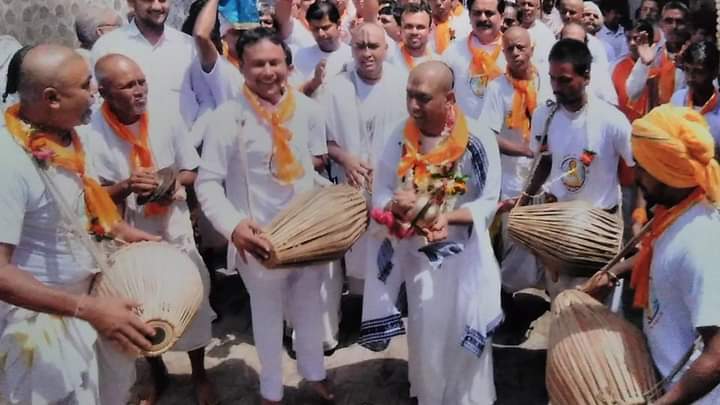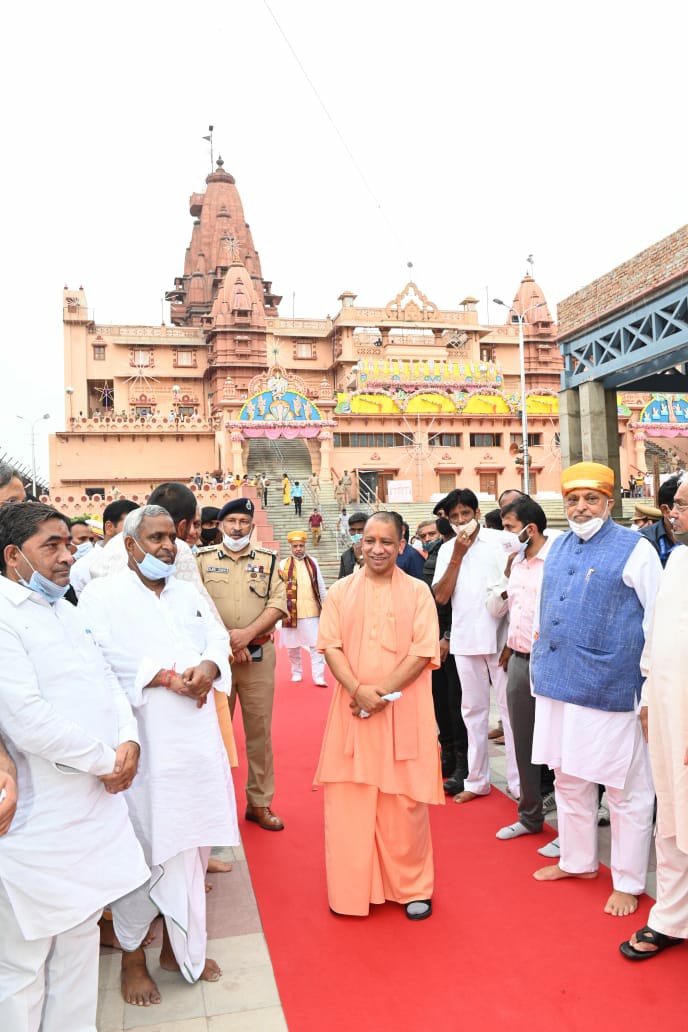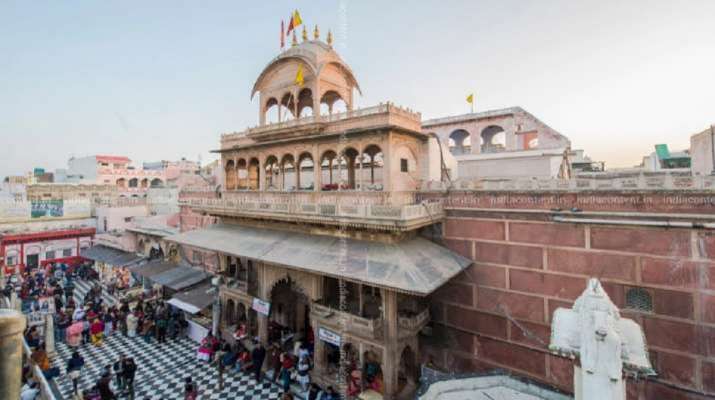2024.07.19 (Vrindavan Today News): The mention of Mudia Purnima evokes feelings of devotion and dedication for Girraj Maharaj and the Spiritual Masters (Gurus). This festival is also known as Guru Purnima. This day is known as the appearance day of Shri Vedavyas. This special day is dedicated to all the Gurus, when the spiritual masters are worshipped.
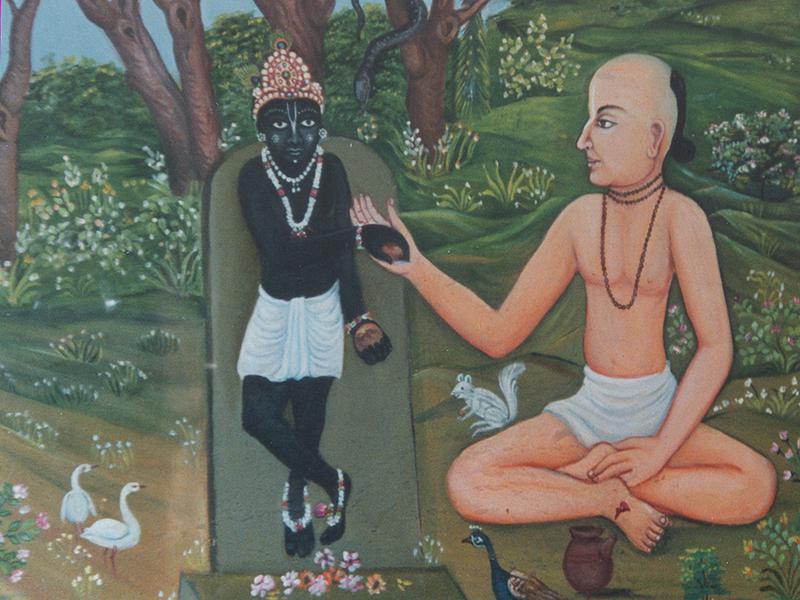
In Braj, the Guru Purnima is more popular as the ‘Mudiya Puno’. Devotees circumambulate the Govardhan Hill in large numbers and this festival can be called as the biggest festival of Braj. Millions of devotees congregate in Braj, particularly in Govardhan. The main ritual includes Parikrama of Giri-Govardhan, bathing in Manasi Ganga and visiting holy spots including Mukharvind and danghati. While the festival is celebrated with much pomp and geity in Braj, but only a few know about the significance of the festival and why it was named ‘Mudiya Puno’.
This tradition of Mudia Purnima, which began 468 years ago, is celebrated with great devotion and enthusiasm by the followers of the Gaudiya Sampradaya. Shrila Sanatan Goswami Pada was the senior most among the six principal followers of Shriman Chaitanya Mahaprabhu, who came to Braj. He was highly regarded by the contemporary saints and Brajwasis.
On the instruction of Shriman Chaitanya Mahaprabhu, the Goswamis established the places connected with the pastimes of Shri Radha-Krishna, which still exist today. They traveled extensively through Vraja mandala discovering many lila sthanas of the Divine Couple. Having no fixed residence, they would catch a few winks of sleep (no more than one and a half hours per day) under a tree or bush. Shri Rupa and Shri Sanatana Goswamis spent all their time writing, discussing Krishna’s pastimes, and chanting Krishna’s Holy Names.
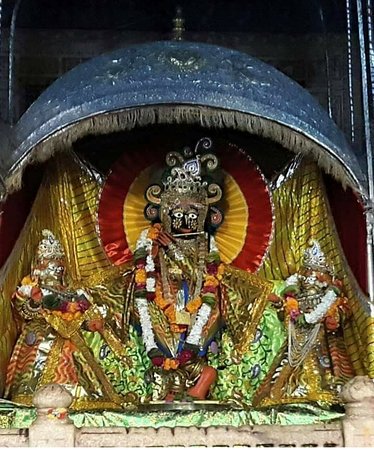
Shri Sanatan Goswami pada performed daily parikrama of Shri Govardhan. He practiced meditation at Chakleshwar in Govardhan. Being the senior most disciples of Shriman Chaitanya Mahaprabhu Shri Rupa and Shri Sanatan Goswamis were considered as a leader of the whole Gaudiya community in Braj. It was Asadh Purnima, when Shri Sanatan Goswami passed away near Chakleshwar, in Govardhan. When the devotees came to know about the demise of their leader, everyone tonsured their heads, the ritual known as ‘mundan’. Those who tonsured their heads were known as ‘Mudiya’. The festival was named after the word Mudiya.
Raghunath Das Goswami was one of the six Goswamis who resided in Radhakund, which is close to Govardhan. In 1545, Raghunath Das Goswami established the Raghunath Das Goswami Gaddi (seat of authority). Hundreds of saints associated with that tradition reside here, around Radhakund. When Raghunath Das Goswami received the news of Sanatan Goswami reaching the eternal pastimes of Thakur Ji, he along with his followers and the saints residing there took part in the Mudia Yatra with their insignias. Even today, the insignias reach from Radhakund with singing and playing of instruments.
After tonsuring their heads, the devotees performed the Giriraj parikrama (Mudiya Yatra) carrying the body of Shri Sanatan Goswami Pada.
Later the body was brought to in a procession to Dwadashaditya Tila in Vrindavan and entombed on the foothill of the Madan Mohan Temple.
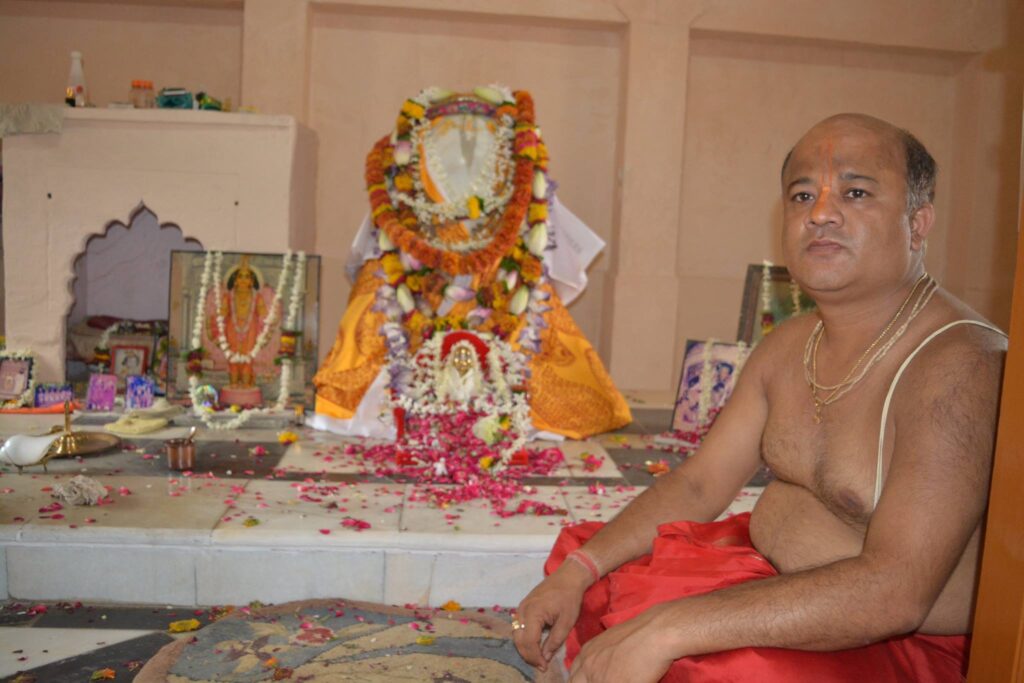
Since then the saints who participate in the Mudiya Yatra observe the tradition of Mundan (tonsure) two days prior to the grand festival. Gand processions of Nagar Sankirtan are taken out from the Mahaprabhu Mandir and Shyam Sundar Mandir of Govardhan.
Samadhi Pujan is organised at the Samadhi of Shri Sanatan Goswami Pada every year. Adhivas Kirtan, Suchak Kirtan and Harinam Sankirtan is pefromed at the Samadhi. Phool Bangla is made for Shri Sanatan Goswami’s beloved Shri Madan Mohan Lal ji and 56 bhog is offered to the Lord. Devotees in large number offer their tribute to Shri Sanatan Goswami pada.
.


